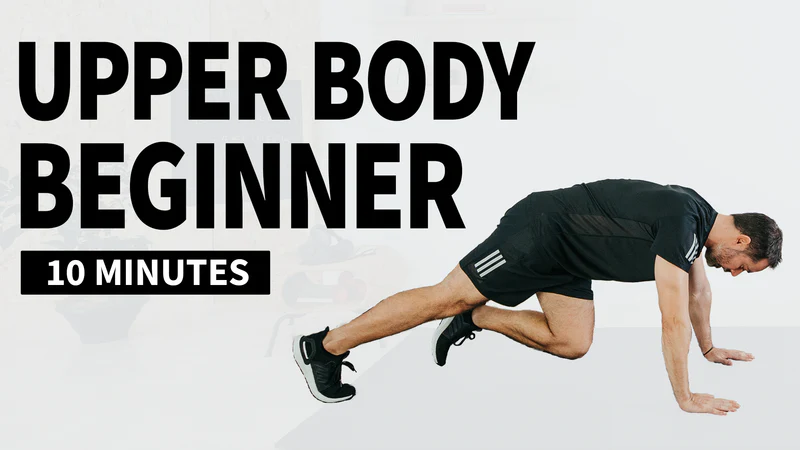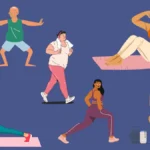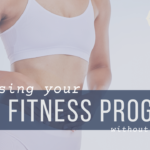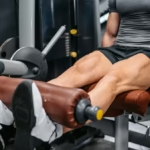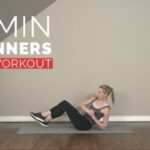Getting stronger doesn’t require expensive gym memberships or heavy equipment. Your body is the perfect workout tool that’s always available. Building upper body strength without weights is not only possible but highly effective for beginners.
Understanding Upper Body Muscle Groups
Primary Muscles You’ll Work
Your upper body contains several key muscle groups that work together to create functional strength. The deltoids form the rounded shape of your shoulders and help move your arms in all directions. Your chest muscles, or pectorals, are responsible for pushing movements and create the foundation of upper body power.
Supporting Muscle Network
The triceps make up about 60% of your upper arm and are crucial for pressing and pushing movements. Your back muscles, including the latissimus dorsi and rhomboids, balance the pushing muscles and improve posture. These stabilizing muscles improve how firmly you can grasp objects and contribute to fine motor skills.
Benefits of Bodyweight Upper Body Training
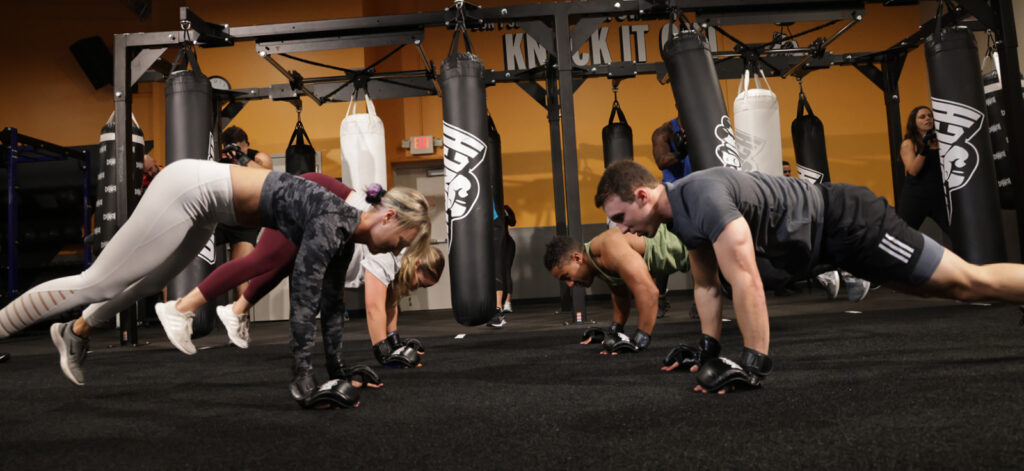
Immediate Health Improvements
Upper body strength training provides benefits that extend far beyond appearance. Strong shoulders and arms make daily tasks easier, from carrying groceries to lifting children. You’ll notice improved confidence when handling everyday activities that require pushing, pulling, or lifting.
Long-term Physical Development
Regular bodyweight training increases muscle mass, which raises your metabolic rate and helps burn more calories throughout the day. This type of training also helps prevent age-related muscle loss, which becomes increasingly important as you get older. Strong upper body muscles create better posture by correcting muscle imbalances common in people with desk jobs.
Essential Beginner Exercises
Push-Up Variations
Push-ups are the foundation of bodyweight upper body training. Start with wall push-ups if you’re a complete beginner. Stand arm’s length from a wall, place your palms flat against it at shoulder height, and perform the pushing motion. This variation reduces the amount of body weight you’re lifting while teaching proper form.
Progress to knee push-ups when wall push-ups become easy. Place your knees on the ground and maintain a straight line from your knees to your head. This modification removes about half your body weight from the exercise while still working all the major upper body muscles.
Basic Plank Exercises
Planks are excellent all-around exercises that boost arm, back, chest, and shoulder strength while also targeting your core. Start in a forearm plank position with your elbows directly under your shoulders. Your body should form a straight line from your head to your heels.
Hold this position for 15-30 seconds initially, gradually increasing the time as you get stronger.Planks work multiple muscle groups simultaneously, making them incredibly efficient for building functional strength.
Progressive Training Techniques
The 5-Minute Rule
When motivation is low, commit to just five minutes of exercise. Tell yourself you can stop after that if you want. Most people find they want to continue once they get started. This technique works because getting started is usually the hardest part of any workout.
Gradual Progression Methods
Start with easier variations and slowly progress to more challenging ones. For push-ups, progress from wall to incline, then to knee push-ups, and finally to full push-ups. This systematic approach allows your muscles and joints to adapt safely while building confidence.
Use the principle of progressive overload by gradually increasing repetitions, hold times, or exercise difficulty. When you can easily perform 12-15 repetitions of an exercise, it’s time to progress to a more challenging variation.
Also Read How to Stay Motivated When You Don’t Feel Like Working Out
Building Your Upper Body Strength
Tricep-Focused Movements
Tricep dips are excellent for targeting the back of your arms. Sit on the edge of a stable chair or bench with your hands placed beside your hips. Slide forward off the seat and lower your body by bending your elbows. Keep your elbows pointing straight back throughout the movement.
Diamond push-ups specifically target your triceps. Form a diamond shape with your hands by touching your thumbs and index fingers together. This closer hand position shifts more work to your triceps compared to regular push-ups.
Shoulder Development Exercises
Pike push-ups are fantastic for building shoulder strength. Start in a downward dog position with your hips raised high. Lower your head toward the ground by bending your elbows, then push back up. This exercise mimics the motion of an overhead press using just your body weight.
Shoulder taps add stability challenges while strengthening your shoulders. Start in a plank position and lift one hand to tap the opposite shoulder. Keep your core tight to minimize swaying. This exercise builds shoulder stability while challenging your balance.
Upper Body Workout Structure
Weekly Training Schedule
Train your upper body 2-3 times per week for optimal results. Research shows that training muscle groups at least twice weekly maximizes muscle growth compared to once-per-week routines. Allow at least one day of rest between upper body sessions to let your muscles recover.
For beginners, three full-body workouts per week work better than splitting upper and lower body sessions. This approach ensures you’re working all muscle groups regularly while keeping your routine simple and manageable.
Session Organization
Structure each workout with a proper warm-up, main exercises, and cool-down. Spend 5-10 minutes warming up with light movement and dynamic stretches. This prepares your muscles and reduces injury risk.
Perform 3-4 different exercises during each session, completing 2-3 sets of 8-15 repetitions.Start with shorter hold times and fewer repetitions, gradually increasing as you get stronger.End each session with 5-10 minutes of stretching and cool-down activities.
Creating Effective Workouts
Back Strengthening Moves
The Superman exercise targets your entire back while also working your glutes and core. Lie face down with arms extended in front of you. Simultaneously lift your arms, chest, and legs off the ground, holding for 5 seconds before lowering. This exercise strengthens the often-neglected posterior muscles.
Reverse snow angels work your upper and middle back. Lie face down with arms at your sides. Lift your arms slightly off the ground and move them in a wide arc overhead, then back to your sides. This movement targets the rhomboids and helps improve posture.
Compound Movement Patterns
Bear crawls provide a full upper body workout while improving coordination. Start in a tabletop position with knees hovering just off the ground. Walk forward using opposite hand and foot movements while maintaining the position. This exercise builds functional strength that transfers to daily activities.
Burpees combine multiple movement patterns into one challenging exercise. From standing, squat down and place your hands on the ground. Jump your feet back into a plank position, perform a push-up, then reverse the movement. This full-body exercise dramatically improves both strength and cardiovascular fitness.
Safety Guidelines and Best Practices
Proper Form Fundamentals
Always prioritize correct form over the number of repetitions. If you can’t maintain proper technique, reduce the difficulty or take a rest. Use a mirror or record yourself to check your form during exercises. Proper alignment prevents injuries and ensures you’re getting maximum benefit from each movement.
Keep your movements slow and controlled. The lowering portion of each exercise should take 2-3 seconds. This controlled tempo maximizes muscle engagement and reduces the risk of injury.
Listening to Your Body
Start slowly and increase gradually. If you haven’t exercised in a while, begin with just 10-15 minutes of activity. Some muscle soreness is normal, but sharp pain means you should stop immediately. The “talk test” is useful – you should be able to carry on a conversation during exercise without becoming too breathless.
Stay hydrated throughout your workout and take rest days when needed. Your body needs time to repair and strengthen between training sessions. Adequate sleep and proper nutrition support your fitness progress.
Advanced Progressions
Challenging Push-Up Variations
Once regular push-ups become easy, try decline push-ups with your feet elevated on a chair or bench. This increases the difficulty by adding more body weight to the movement. Single-arm push-ups represent the ultimate bodyweight pushing challenge.
Archer push-ups teach you to handle uneven loads. Perform a push-up while extending one arm out to the side. This variation builds the strength needed for advanced one-arm variations.
Dynamic Movement Patterns
T push-ups combine strength with rotation. After completing a regular push-up, rotate your body to one side and extend one arm toward the ceiling. This creates a T-shape with your body and adds core stability challenges.
Plyo push-ups develop explosive power. Push up with enough force to lift your hands off the ground. Start with small “pops” and gradually increase the height as you get stronger.
Measuring Your Progress
Tracking Improvements
Keep a simple workout log to record your exercises, sets, and repetitions. You’ll see progress long before it shows in the mirror. Note how you feel after each workout, not just what you accomplished. Improved energy levels and reduced fatigue are early signs of increasing fitness.
Take progress photos and measurements to document changes over time. Sometimes the scale doesn’t reflect muscle gains, but photos reveal improvements in posture and muscle definition.
Setting Realistic Goals
Focus on process goals rather than just outcome goals. Instead of aiming to “get ripped,” commit to working out three times per week. This approach gives you more control over your success and builds lasting habits.
Celebrate small victories along the way. Successfully completing your first full push-up or holding a plank for one minute are significant achievements worth recognizing. These celebrations create positive associations with exercise.
Frequently Asked Questions
How often should I do upper body workouts as a beginner?
Can I build muscle with just bodyweight exercises?
What if I can’t do a single push-up?
How long should each workout session last?
Should I feel sore after every workout?
When will I start seeing results?
Do I need any equipment for bodyweight training?
Building upper body strength without weights is an achievable goal that provides lasting benefits for your health and daily function. Start with basic exercises, focus on proper form, and progress gradually. Your consistency and patience will be rewarded with increased strength, better posture, and improved confidence in your physical capabilities.
Author- Ayush
